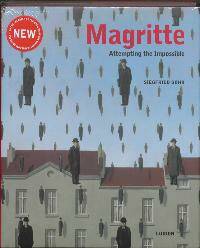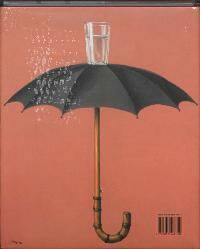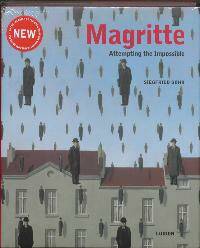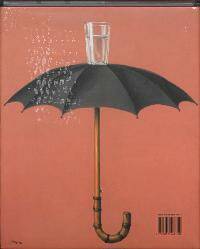
- Afhalen na 1 uur in een winkel met voorraad
- Gratis thuislevering in België vanaf € 30
- Ruim aanbod met 7 miljoen producten
- Afhalen na 1 uur in een winkel met voorraad
- Gratis thuislevering in België vanaf € 30
- Ruim aanbod met 7 miljoen producten
Zoeken


Omschrijving
This new monograph is published to coincide with the opening of the Magritte museum. Magritte is without a doubt one of the most important artists of the twentieth century. In June 2009 a new museum for the Belgian Surrealist opened its doors in the centre of Brussels. The collection contains more than 200 works from every period of Magritte's life: paintings in oils, gouache, drawings, sculptures, musical scores...
This new Magritte monograph includes not only more than 300 works but also a good deal of unpublished material. Each chapter deals extensively with a key work, such as The Treachery of Images (Ceci n'est pas une pipe), and each time the intellectual and historical context is outlined that led to the creation of this work and of related paintings and drawings.
'The result is a monograph that no one who wants to study Magritte in depth will be able to neglect in the future. Besides the abundant and often surprising illustrative material, the text clarifies the oeuvre chapter by chapter. The thematic approach enables Siegfried Gohr to stay as close as possible to the works in discussing particular issues.' Michel Draguet, director, Koninklijke Musea voor Schone Kunsten van België, Brussels.
About the author:
Siegfried Gohr studied art history, archaeology and philosophy at the universities of Cologne and Tubingen. He was appointed director of the Kunsthalle in Cologne in 1978, and later also director of the Museum Ludwig. In 1992 he was appointed Professor of Art History at the Staatliche Hochschule für Gestaltung in Karlruhe. A few years later he was also given chairs at the Academy of Fine Art in Düsseldorf and at Harvard University, Cambridge.
This new Magritte monograph includes not only more than 300 works but also a good deal of unpublished material. Each chapter deals extensively with a key work, such as The Treachery of Images (Ceci n'est pas une pipe), and each time the intellectual and historical context is outlined that led to the creation of this work and of related paintings and drawings.
'The result is a monograph that no one who wants to study Magritte in depth will be able to neglect in the future. Besides the abundant and often surprising illustrative material, the text clarifies the oeuvre chapter by chapter. The thematic approach enables Siegfried Gohr to stay as close as possible to the works in discussing particular issues.' Michel Draguet, director, Koninklijke Musea voor Schone Kunsten van België, Brussels.
About the author:
Siegfried Gohr studied art history, archaeology and philosophy at the universities of Cologne and Tubingen. He was appointed director of the Kunsthalle in Cologne in 1978, and later also director of the Museum Ludwig. In 1992 he was appointed Professor of Art History at the Staatliche Hochschule für Gestaltung in Karlruhe. A few years later he was also given chairs at the Academy of Fine Art in Düsseldorf and at Harvard University, Cambridge.
Specificaties
Betrokkenen
- Auteur(s):
- Vertaler(s):
- Uitgeverij:
Inhoud
- Aantal bladzijden:
- 324
- Taal:
- Engels
Eigenschappen
- Productcode (EAN):
- 9789055448050
- Verschijningsdatum:
- 21/05/2009
- Uitvoering:
- Hardcover
- Afmetingen:
- 277 mm x 336 mm
- Gewicht:
- 2709 g

Alleen bij Standaard Boekhandel
+ 59 punten op je klantenkaart van Standaard Boekhandel
Beoordelingen
We publiceren alleen reviews die voldoen aan de voorwaarden voor reviews. Bekijk onze voorwaarden voor reviews.









